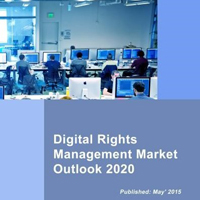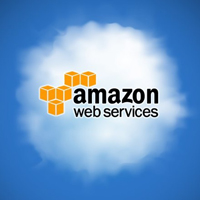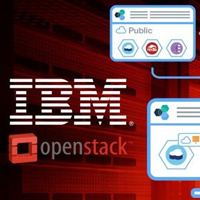In This Issue
- ADRM FAQ Available
- DRM Market 2015-20
- Mobile Video & DRM
- Report from the CEO
- Mobile 1st, What Next
- OTT Revenue Security
- Intertrust & Huawei
- Top 9 Cloud Threats
- DDoS & Data Centers
- Amazon Leads IaaS t
- Google Drops Prices
- IBM OpenStack Svcs.
- Future Is Autonomics
- BD Analytics for IaaS
- Cloud Caucus Report
- ISPs Ask Court Block
- Coming DCIA Events
ADRM Working Group FAQ Now Available
Contact the DCIA for More Information
 The Advancement of Digital Rights Management (ADRM) Working Group is signing-up participants and discussing, refining, and prioritizing action plans targeting five constituencies in advance of the group’s formative meeting in June:
The Advancement of Digital Rights Management (ADRM) Working Group is signing-up participants and discussing, refining, and prioritizing action plans targeting five constituencies in advance of the group’s formative meeting in June:
Major DRM Platform Providers — Improved interoperability among dominant DRM standards-setting entities can result in improved downstream efficiencies for DRM industry integrators and re-sellers.
CE Device Manufacturers — A common set of DRM requirements for set-top, DVR, display, and related consumer electronics makers can improve the product development and implementation process.
High-Value Content Distributors — A standardized approach to degrees of protection required for levels of content relative to the value of revenue streams being protected can increase industry productivity.
Consumer End-Users — Simplifying the processes involved in accessing multiple instances of differently DRM-ed content across numbers of co-owned devices can lead to greater acceptance and adoption.
DRM Industry Opponents — Public communication of security protection benefits associated with access control as well as the provision of greater value and utility for protected data can counter misguided opposition.
Please email adrm@dcia.info for the new ADRM Fequently Asked Questions (FAQ)… Read More
Digital Rights Management (DRM) Market 2015-2020
Excerpted from Business Wire Press Release
 Research and Markets has announced the addition of the “Digital Rights Management Market Outlook 2020” report to its offerings.
Research and Markets has announced the addition of the “Digital Rights Management Market Outlook 2020” report to its offerings.
Globally, the extensive generation of web-based data has resulted in the amplification of demand for solutions pertaining to streamlining of secured data access and its management. The global market of DRM holds a large potential not only due to the obvious concerns of copyright holders, but also due to laws mandating increased security for private information held in digital form.
Since the organizational web-content is critical and needs efficient handling and consistency while publishing on websites, digital rights management (DRM) can be seen as an attempt to provide access control of that digital content.
In the latest research study Digital Rights Management Market Outlook 2020, the analysts have identified and described the market dynamics in important segments thus clearly highlighting the areas offering promising possibilities for companies to boost their growth.
The global DRM market is estimated to grow at a CAGR of around 16% during 2015-2020… Read More
Mobile Video Viewing Raises DRM Issues
Excerpted from TV Technology Report by Frank Paolino
 With mobile online video viewing increasing more than 400 percent in the past two years and accounting for more than 25 percent of video consumption, it’s become imperative that organizations effectively enable anytime-anywhere delivery of video content across all devices and platforms.
With mobile online video viewing increasing more than 400 percent in the past two years and accounting for more than 25 percent of video consumption, it’s become imperative that organizations effectively enable anytime-anywhere delivery of video content across all devices and platforms.
The evolution and proliferation of mobile devices is exacerbating the complexity of an already extremely fragmented marketplace. Every device, browser and operating system carries a different video capability and limitation, and the complexities don’t stop there. Competing streaming protocols — namely, Adobe HTTP Dynamic Streaming, Apple HTTP Live Streaming, Microsoft Smooth Streaming and the emerging MPEG-DASH (Dynamic Adaptive Streaming over HTTP) — further segment the market, each working only with certain systems or browsers.
And lastly, digital rights management (DRM) will become increasingly important and commonplace as publishers demand stronger content protection for delivering HD and 4K resolutions. Implementing DRM remains complicated as publishers must resolve device and player support among formats such as Microsoft Playready, Google Widevine, Adobe Access, and others.
Moving forward, the HTML5 Encrypted Media Extensions draft specification will help enable aforementioned HTML5 MSE browser-based players… Read More
Report from DCIA CEO Marty Lafferty
 The Distributed Computing Industry Association (DCIA) is pleased to extend our partnership with Coughlin Associates and the Entertainment Storage Alliance (ESA) as a co-sponsor of the ninth annual Creative Storage Conference (CSC 2015).
The Distributed Computing Industry Association (DCIA) is pleased to extend our partnership with Coughlin Associates and the Entertainment Storage Alliance (ESA) as a co-sponsor of the ninth annual Creative Storage Conference (CSC 2015).
CSC 2015 will be held on June 30th in Culver City, CA and has as its Platinum Sponsor DCIA Member Company Data Direct Networks (DDN).
DDN is a supplier of advanced digital storage products supporting high-performance as well as cloud-based-object storage.
A key market for DDN is the media and entertainment sector, making its products a great fit for CSC 2015.
The one-day conference will bring together influential digital storage providers, equipment manufacturers and software developers, and professional media and entertainment end-users in one place to explore this year’s theme “Exabytes for Video.”
Please click here for the full agenda, which includes three keynote addresses and six panel discussions.
Alex Grossman, Vice President, Media & Entertainment, at Quantum will keynote at CSC 2015 on “The Value of Intelligent Workflow Storage in a Changing Media Production Landscape.”
The greater demand for always-on media, higher-resolution content, and the ever-increasing need for storage capacity are forcing dramatic changes at both technical and business levels.
General purpose, IT-centric storage simply can’t keep up with the demands placed on broadcast and post-production operations today.
To maximize business value and improve efficiency, content workflows need a new generation of media-aware, intelligent workflow storage.
Adding intelligence to workflows can make creative production more efficient, provide greater control, and — above all — help content rights-holders capture the greatest returns from their valuable assets.
CSC 2015 will provide a unique venue for content creators and distributors to gather firsthand knowledge and engage in lively discussion with companies driving innovative solutions to challenging workflow and cloud-based storage issues.
Please click here to register. Share wisely, and take care.
Mobile First, But What’s Next?
Excerpted from TechCrunch Report by Peter Wagner
 The ascendance of mobile devices, cloud computing and big data is having a profound impact on the lives of workers. Yet many of the business applications that run on their smartphones and tablets still fail miserably to take full advantage of this revolutionary shift. Even services that tout themselves as “mobile first” often fall short of delivering novel functionality that boosts productivity and profit.
The ascendance of mobile devices, cloud computing and big data is having a profound impact on the lives of workers. Yet many of the business applications that run on their smartphones and tablets still fail miserably to take full advantage of this revolutionary shift. Even services that tout themselves as “mobile first” often fall short of delivering novel functionality that boosts productivity and profit.
The offerings that will come to dominate the emerging $100 billion market for enterprise applications will be those that are “authentically mobile,” a term we use to describe services that would be extremely difficult or impossible to achieve without taking full advantage of the unique properties of the mobile ecosystem.
Truly authentic mobile business applications are still pretty rare. But services from firms such as Clari and Base CRM in customer-relationship management, and from startups such as Yoi in human resources, have elements of mobile authenticity that make them harbingers of what is to come.
Mobile-first applications, which treat mobile use cases as the priority rather than the afterthought, are certainly an improvement over traditional, “pave-the-goat-paths” ones, which simply mimic desktop functionality on mobile platforms… Read More
Making Sense of OTT Revenue Security
Excerpted from Verimatrix Announcement
 Amid the competition of proprietary browser formats and plug-ins, apps on mobile devices are gaining considerable traction to watch video. Operators are faced with having to support both browser and app interface environments over the next few years.
Amid the competition of proprietary browser formats and plug-ins, apps on mobile devices are gaining considerable traction to watch video. Operators are faced with having to support both browser and app interface environments over the next few years.
Understand the two parallel trends that threaten to further marginalize the browser for video and gain more insights into how to simplify your rights management platform.
Your guide to simplifying your rights management platform is available now. Get the OTT Guide here.
As consumers demand support for more devices to access their preferred OTT video services, complexity seems likely to increase further. Operators are required to support multiple streaming formats and digital rights management (DRM) schemes native to browsers and device families.
The situation is predicted to get worse at least over the next two to three years.
Fortunately operators can partner with specialist revenue security providers such as Verimatrix to reduce the impact of this complexity… Read More
Intertrust & Huawei Strategic Patent License
Excerpted from Business Wire Press Release
 Intertrust Technologies Corporation today announced a strategic patent licensing agreement with Chinese information and communication technologies giant Huawei. Under the terms of the agreement, Huawei has licensed Intertrust’s seminal patent portfolio that counts numerous key inventions in trusted distributed computing and digital rights management (DRM). Intertrust also obtained a license to Huawei’s patents in certain key fields.
Intertrust Technologies Corporation today announced a strategic patent licensing agreement with Chinese information and communication technologies giant Huawei. Under the terms of the agreement, Huawei has licensed Intertrust’s seminal patent portfolio that counts numerous key inventions in trusted distributed computing and digital rights management (DRM). Intertrust also obtained a license to Huawei’s patents in certain key fields.
“We are proud to announce Intertrust’s IP partnership with Huawei, which is our first such deal with a major Chinese technology provider,” said Kenny Huang, Intertrust’s Beijing-based Managing Director for Greater China. “This new deal extends our already strong technology partnership with Huawei, and paves the way for future licensed products on both sides.”
Developed over the last 25 years, Intertrust’s prolific patent portfolio is seen by many as definitive for a broad range of products in distributed trusted computing. DRM technology is an application of these inventions, but the portfolio also enables broader applications of secure operating systems, app stores, and distributed information protection and management. The patents are licensed globally to many of the world’s great mobile and IT companies for applications ranging from document protection, media DRM, and security aspects of operating systems like Android… Read More
Top 9 Cloud Computing Threats
Excerpted from ComputerWorld Report by Hamish Barwick
 Cloud computing has become ubiquitous for many companies but keeping it secure can be a challenge.
Cloud computing has become ubiquitous for many companies but keeping it secure can be a challenge.
Cloud Security Alliance Asia Pacific Executive Council chairman Ken Low shared the alliance’s top nine threats to the cloud at a Trend Micro event in Sydney.
9: Shared technology vulnerabilities
“In 2014, we have seen some of the most critical vulnerabilities such as Heartbleed which affected OpenSSL. That allowed people access to encrypted data,” said Low.
There was also the discovery of the Shellshock vulnerability which affected the Bash shell.
“Cloud service providers can scale their services by sharing infrastructure default to applications but the lack of strong isolation properties in monitored environments make them vulnerable,” said Low.
He said that virtual patching can stop shared technology vulnerabilities.
“Launching without patching is like jumping into a hole. Patching is not easy but you can set up patch management… Read More
New DDoS Threats Against Data Centers
Excerpted from Data Center Knowledge Report by Bill Klyman
 Today’s business world is becoming ever more reliant on the data center. With more workloads, more end-points, and a lot more data, demands around resources and efficient technologies continues to grow. The data center has become the heart of any modern organization. With virtualization and cloud computing at the helm, many are saying that it’s great to be in the data center business. Although this may be the case from an infrastructure side, we can never forget that as more people move towards a type of platform — the bigger the target becomes.
Today’s business world is becoming ever more reliant on the data center. With more workloads, more end-points, and a lot more data, demands around resources and efficient technologies continues to grow. The data center has become the heart of any modern organization. With virtualization and cloud computing at the helm, many are saying that it’s great to be in the data center business. Although this may be the case from an infrastructure side, we can never forget that as more people move towards a type of platform — the bigger the target becomes.
Cloud computing has given rise to many new types of services for organizations. These include hosting options, data center extensions and even new disaster recovery strategies. With the increase in cloud utilization comes the very real increase in security threats.
There’s little doubt that as the size, frequency and complexity of distributed denial of service (DDoS) attacks continue to rise, hosting and cloud service providers must have solutions in place to protect the availability of their infrastructure and services. Now, there are three specific types of attacks which attackers can utilize to bring a system to a halt: Volumetric Attacks, TCP State-Exhaustion Attacks, and Application-Layer Attacks.
A recent Arbor Networks security report from Arbor illustrates how attacks are growing in size, complexity and frequency… Read More
Amazon Overwhelming Leader in Cloud Infrastructure
Excerpted from Benzinga Report by John Seward
 Amazon’s cloud infrastructure services is doing more than 10 times the capacity volume of 14 other providers covered in an annual survey.
Amazon’s cloud infrastructure services is doing more than 10 times the capacity volume of 14 other providers covered in an annual survey.
Infrastructure, along with software-as-a-service (SaaS) and platform-as-a-service (PaaS), is generally placed among the three broad categories of cloud computing services.
Amazon “is the overwhelming market-share leader,” according to the report, published Monday by Gartner.
Although Amazon is facing increasing competition from Microsoft and Google in the sector, “it retains a multiyear competitive advantage,” Gartner said.
No. 2-ranked Microsoft entered the cloud infrastructure as a service market two years ago with the launch of its Azure Infrastructure Services.
Google, in Gartner’s number three slot, “is still in the rudimentary stages of learning to engage with enterprise and midmarket customers,” according to Gartner. Google now competes on price, but needs to expand its sales, solutions engineering, and support capabilities… Read More
Google Drops Prices for Cloud Computing Platform
Excerpted from iDigitalTimes Report by Ken Salcedo
 Google announced that it has reduced its pricing for its cloud platform for virtual machines by up to 30 per cent. With the new pricelist of the new cloud service, the company claims that its platform costs 40 per cent less for most of the heavy workload.
Google announced that it has reduced its pricing for its cloud platform for virtual machines by up to 30 per cent. With the new pricelist of the new cloud service, the company claims that its platform costs 40 per cent less for most of the heavy workload.
The announcement was made this past Monday through the company’s official cloud platform blog and also gives customers details on how the new pricing works.
“Starting today, we are reducing prices of all Google Compute Engine Instance types as well as introducing a new class of pre-emptible virtual machines that delivers short-term capacity for a very low, fixed cost,” the blog reads. “When combined with our automatic discounts, per-minute billing, no penalties for charging machine types, and no need to enter into long-term fixed-price commitments, it’s easy to see why we’re leading the industry in price/performance.”
The 30 per cent price reduction is for users with Micro configurations on their machines. For Standard configuration, the price dropped by 20 per cent, while for High Memory and Small configuration the price went down by 15 per cent. For users with High CPU configurations, the price dropped by 5 per cent while Europe and Asia will have similar price reductions… Read More
IBM Rolls-Out OpenStack Services
Excerpted from TopTechNews Report by Jef Cozza
 In an effort to open up the hybrid cloud, IBM has announced that it will make OpenStack the technological basis for all of its cloud services. Called IBM Cloud OpenStack Services, the new initiative will provide a suite of OpenStack-based software services for hybrid cloud clients.
In an effort to open up the hybrid cloud, IBM has announced that it will make OpenStack the technological basis for all of its cloud services. Called IBM Cloud OpenStack Services, the new initiative will provide a suite of OpenStack-based software services for hybrid cloud clients.
The new platform will allow customers to integrate applications and data across different hybrid clouds, including public, dedicated and local cloud environments without having to worry about customizing technology for their specific deployment needs or cross-vendor compatibility issues. Big Blue said that the new offering will help increase productivity for developers working across multiple clouds.
OpenStack is a free, open source cloud-computing platform used by enterprises as an infrastructure-as-a-service (IaaS) solution. The OpenStack ecosystem is backed by its own non-profit foundation and is available under the terms of the Apache license.
On Monday, Mirantis, one of the founding members of the OpenStack foundation, announced a new partnership development program for OpenStack compatible components that includes 47 infrastructure technology companies… Read More
Why the Future Is Cloud Autonomics
Excerpted from CloudTech Report by Joe Kinsella
 Many great innovations have come out of cloud computing, such as on-demand infrastructure, consumption-based pricing, and access to global computing resources. However, these powerful innovations have come at a high cost: complexity.
Many great innovations have come out of cloud computing, such as on-demand infrastructure, consumption-based pricing, and access to global computing resources. However, these powerful innovations have come at a high cost: complexity.
Managing cloud infrastructure today is substantially more complex than managing traditional data center infrastructure. While some of the complexity is a direct consequence of operating in a highly transient and shared computing environment, most has to do with the unintended side effects of cloud computing. For example, consumption-based pricing allows us to pay for only what we use, but requires careful monitoring and continuous optimization to avoid resource waste and poor cost management.
API-driven resources allow us to launch compute and storage with a few lines of code, but require that the resources be highly configurable to support the various needs of its different users. Purpose-built services (e.g., Amazon S3) substantially reduce the barrier to building new types of applications, but require that we obtain the necessary expertise to manage and operate the new services.
These early experiences with the growing complexity of managing cloud environments spawned a new generation of open source… Read More
Applying Big Data Analytics to IaaS
Excerpted from Talkin’ Cloud Report by Mike Vizard
 One of the dirty little secrets about IT infrastructure inside or out of the cloud is that an enormous amount of it gets wasted. IT organizations regularly spin up virtual machines that inevitably become dormant. Rather than reclaim that space, however, more often than not those virtual machines are simply forgotten about.
One of the dirty little secrets about IT infrastructure inside or out of the cloud is that an enormous amount of it gets wasted. IT organizations regularly spin up virtual machines that inevitably become dormant. Rather than reclaim that space, however, more often than not those virtual machines are simply forgotten about.
Within a data center that waste of IT infrastructure space is annoying. But on a public cloud the cost of all those dormant clouds starts to add up. To give IT organizations more visibility into those dormant virtual machines iLand, a provider of infrastructure-as-a-service (IaaS) offering based on VMware (VMW), has updated its Enterprise Cloud Services (ECS) portal to expose a raft of big data analytics that help customers optimize usage of the iLand cloud.
Running on top of an implementation of the open source Cassandra database, Lilac Schoenbeck, vice president of product management and marketing for iLand, said that idea is to not only enable customers to spend less on dormant virtual machines that they pay for on a monthly basis, but also free up iLand infrastructure for customers that might actually want to use it.
ILand has updated its Enterprise Cloud Services portal to expose a raft of big data analytics that help customers optimize usage… Read More
Fed Cloud Computing Caucus Report
Excerpted from TechZone 360 Report by Laura Stotler
 The US government has been slowly making a migration to the cloud since the Cloud First policy was instated in 2011, but the going has been tough and there has been a certain amount of resistance to making such drastic changes. Congress is trying to speed up the process and encourage cloud migration with a new report courtesy of the Congressional Cloud Computing Caucus.
The US government has been slowly making a migration to the cloud since the Cloud First policy was instated in 2011, but the going has been tough and there has been a certain amount of resistance to making such drastic changes. Congress is trying to speed up the process and encourage cloud migration with a new report courtesy of the Congressional Cloud Computing Caucus.
Led by Representative Gerry Connolly of Virginia, the “Don’t Be a Box Hugger” report provides a comprehensive overview of the federal government’s migration to the cloud and offers insight into the future path for transformation. What is clear is that the Feds are no longer content to sit on the sidelines and are attempting to catch up with private-sector companies when it comes to cloud adoption.
The proposed 2016 budget from President Obama allocates $7.34 billion of the $86.4 billion overall federal IT budget, a mere 8.5 percent, for provisioned services like the cloud. While a fraction of the Feds’ total IT spending, the amount is significant and would place the government on par with the private sector when it comes to cloud services adoption.
One of the main tenets of the report is that a majority of federal agencies are fence sitters… Read More
ISPs Ask Court to Block FCC Title II Neutrality Rule
Excerpted from eWeek Report by Wayne Rash
 A group of cable and telephony Internet service providers (ISPs) and industry associations has filed a formal motion with the Court of Appeals for the District of Columbia to stay the implementation of the Federal Communications Commission’s order to place Internet access under Title II of the Communications Act, a move predicted in this column just a few days ago.
A group of cable and telephony Internet service providers (ISPs) and industry associations has filed a formal motion with the Court of Appeals for the District of Columbia to stay the implementation of the Federal Communications Commission’s order to place Internet access under Title II of the Communications Act, a move predicted in this column just a few days ago.
The industry group wasted no time to head to court after the FCC refused its petition seeking the same thing that they are heading to court to obtain.
The stay alleges that the FCC violated the Administrative Procedures Act, Congressional intent, FCC precedent and a variety of laws, including the Communication Act, when the agency acted to move Internet access to Title II. In addition to requesting a stay, the motion also requested that any hearing be expedited if the stay is not granted.
The petition for the stay was a consolidated effort made after the court directed the petitioners to present their case in a single motion, rather than the separate motions that they had originally planned.
However, the petition is fairly broad since it must convey the concerns of a group of diverse organizations, ranging from the CTIA to US Telecom and AT&T. The potential damages quoted range from pole connection charges and new taxes to violations of the law… Read More
Coming Events of Interest
Data Center and Cloud Awards — June 2nd in Monaco. Europe’s most prestigious awards for data center and cloud achievements will be announced at an evening ceremony prior to the opening of Europe’s ‘must-attend’ DataCloud Europe conference and exhibition.
DataCloud Europe — June 3rd-4th in Monaco. This is eighth annual European Congress & Exhibition focusing on data center and cloud computing, and is co-located with the DataCloud 2015 Awards.
Freescale Technology Forum — June 22nd-25th in Austin, TX. FTF, this year focusing on the Internet of Things (IoT), is the heart of discovery, imagination and innovation. Together we will strategize and design the next market-shifting products.
Cloud World Forum — June 24th-25th in London England. This marquee event is presented by Informa Telecoms & Media. Co-located with the seventh annual major international conference will be Enterprise Apps World.
Cloud Computing Boot Camp — July 30th in Washington, DC. Designed for small-to-medium businesses (SMBs) and their counterparts in government agencies and healthcare organizations whose responsibilities include evaluating, purchasing, and implementing cloud-based solutions.
Internet of Things World Forum (IoTWF) — December 6th-8th in Dubai, UAE. IoTWF is an exclusive event that brings together the best and brightest thinkers, practitioners, and innovators from business, government, and academia to accelerate the market adoption of the Internet of Things.
